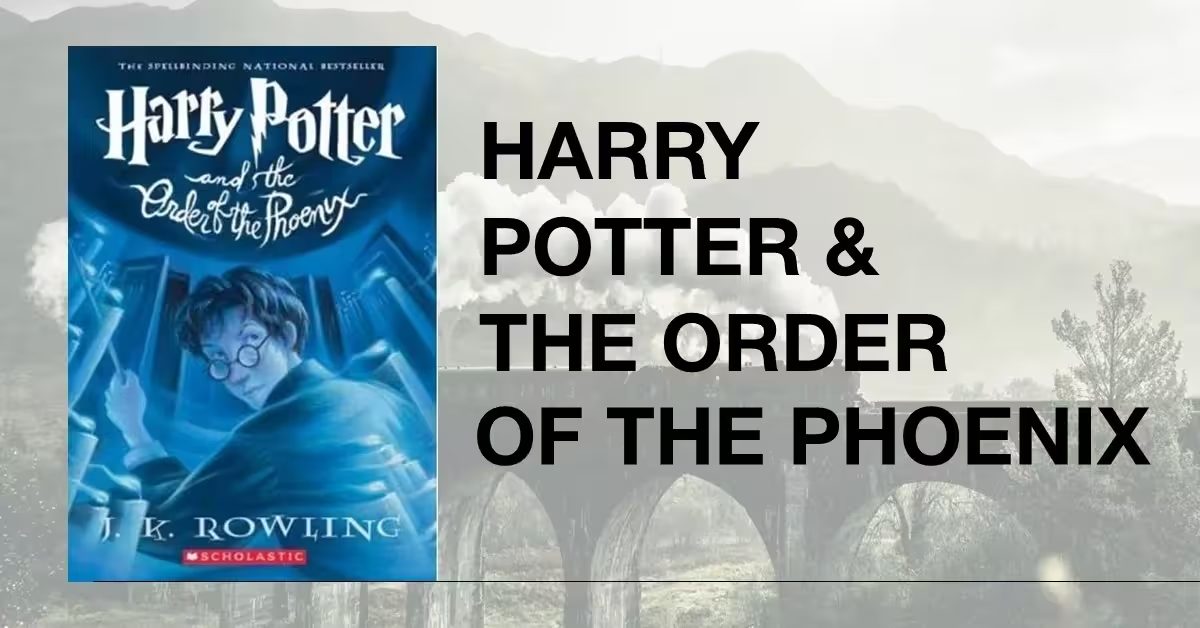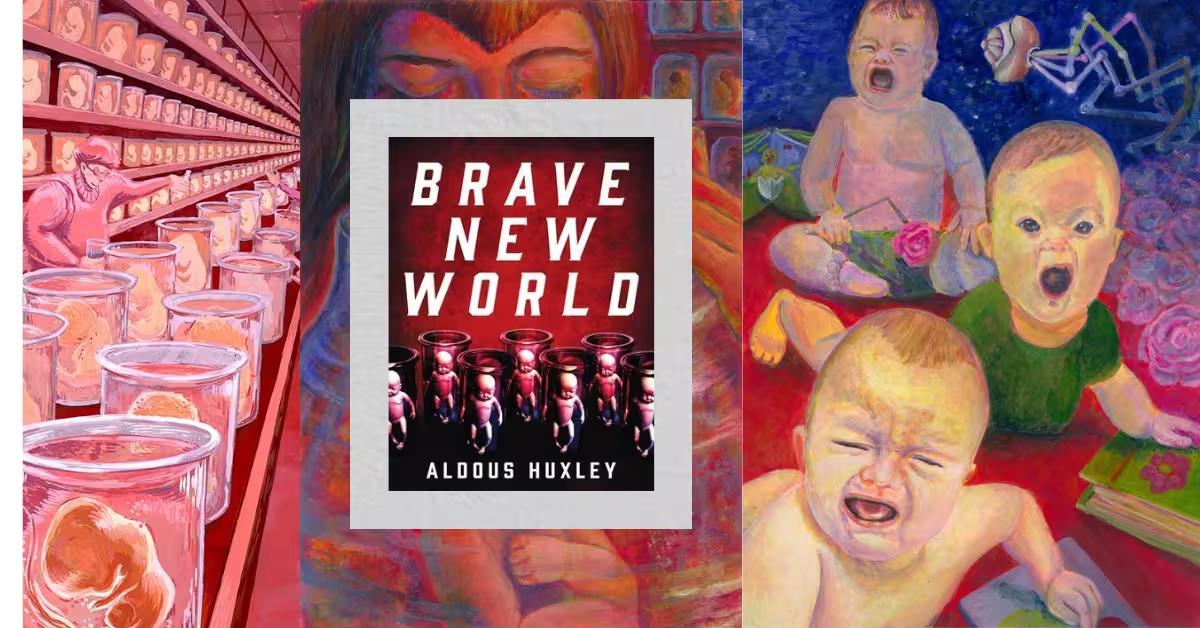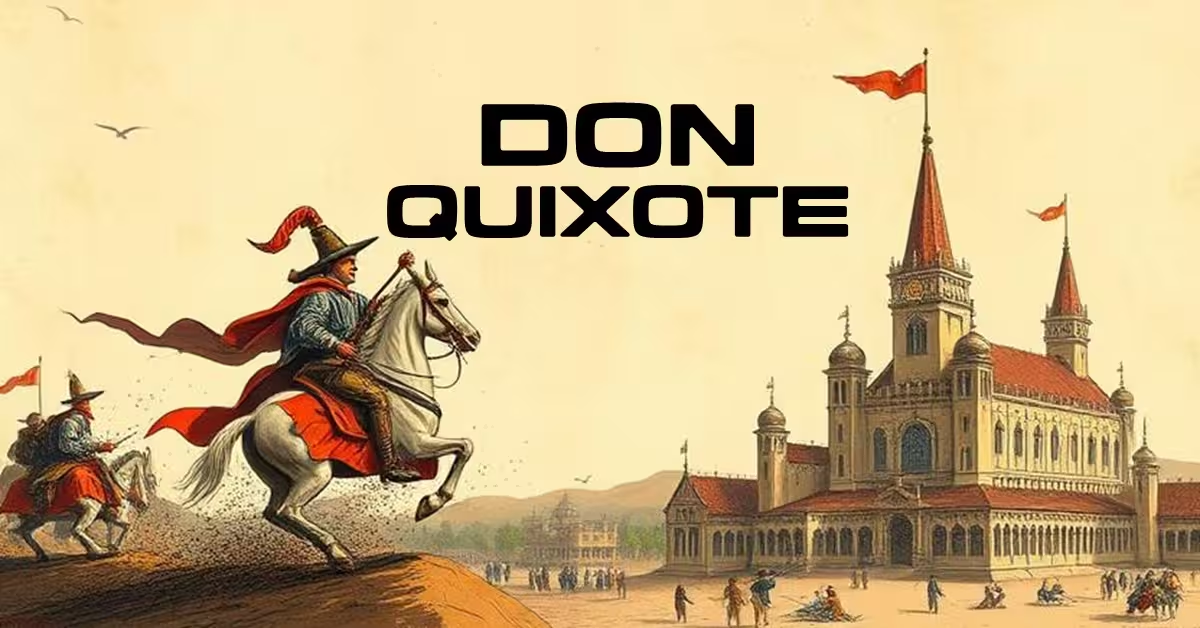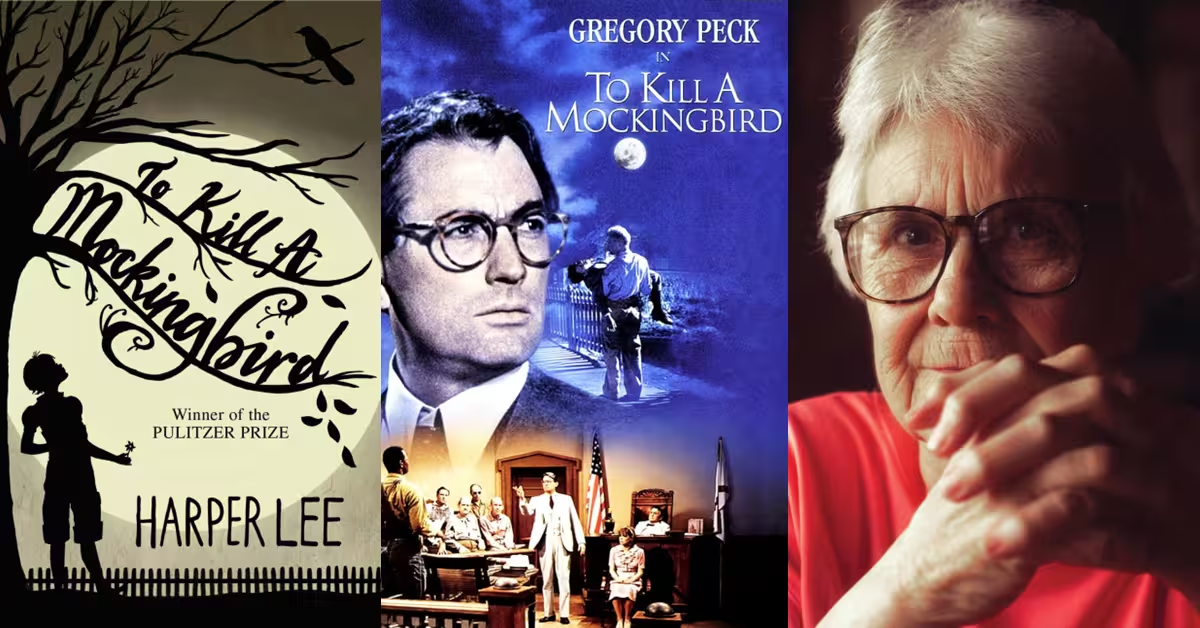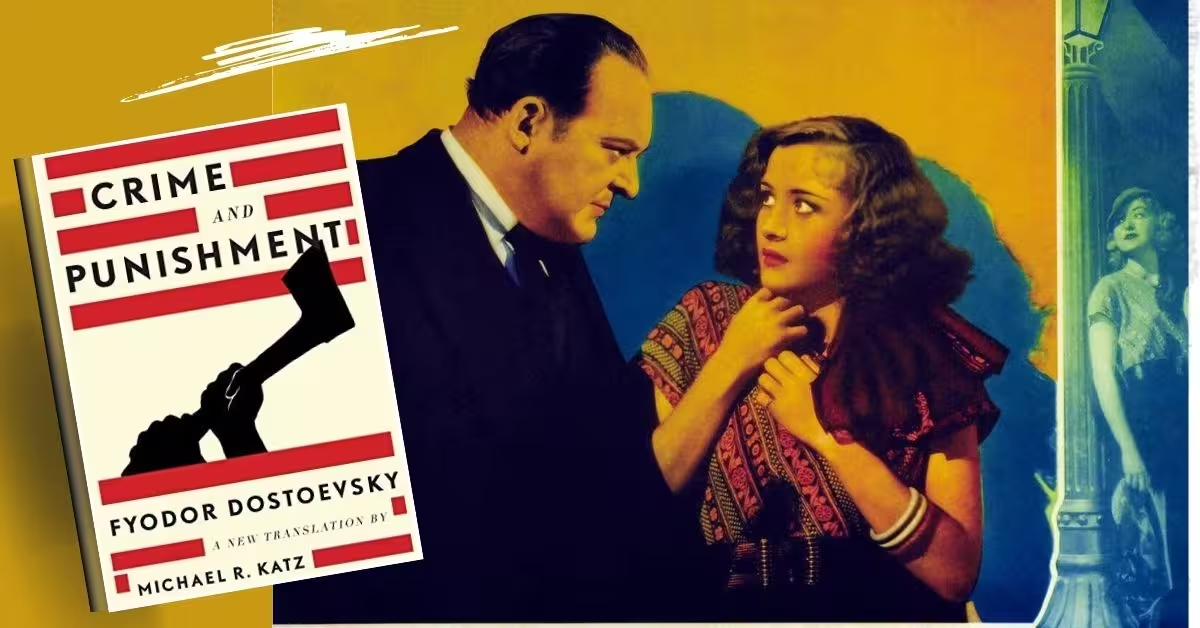Last updated on May 13th, 2025 at 09:53 pm
Harry Potter and the Order of the Phoenix marks a significant shift in the beloved Harry Potter series, taking readers into a much darker and more complex world.
As the fifth installment, this book delves deep into themes of authority, rebellion, and the loss of innocence. With the return of Lord Voldemort, the magical community is plunged into chaos, and Harry, now fifteen, faces not only external threats but also internal struggles.
This in-depth review explores how J.K. Rowling masterfully weaves these elements together, crafting a story that challenges its characters and readers alike to confront the shadows lurking in both the magical and real worlds.
Introduction
The Harry Potter series has enchanted readers of all ages with its magical world, compelling characters, and intricate plots.
J.K. Rowling’s fifth instalment, Harry Potter and the Order of the Phoenix, stands out for its darker tone and deep exploration of power, authority, and adolescence. This article dives into the layers of Order of the Phoenix, examining its plot, characters, themes, and significance within the broader narrative of the Harry Potter series.
A Brief Overview of the Harry Potter Series
Before delving into the specifics of Order of the Phoenix, it’s essential to understand the series’ overarching narrative.
Harry Potter, a young wizard, discovers his magical heritage on his eleventh birthday and is whisked away to Hogwarts School of Witchcraft and Wizardry.
Throughout the series, Harry, along with his friends Hermione Granger and Ron Weasley, faces the dark wizard Lord Voldemort, who seeks to conquer the magical world and subjugate non-magical people.
Setting the Stage: Where We Left Off in Goblet of Fire
At the end of Harry Potter and the Goblet of Fire, the fourth book, the wizarding world is thrown into turmoil as Voldemort returns to power. Harry witnesses the Dark Lord’s rebirth, but the Ministry of Magic, unwilling to accept the truth, dismisses Harry’s claims, setting the stage for the events of Order of the Phoenix.
Plot Summary of Order of the Phoenix
1. The Summer That Wasn’t
Harry Potter is not okay.
After witnessing the return of Lord Voldemort in the graveyard last year — a truth the wizarding world refuses to accept — Harry is left isolated, angry, and confused. Summer in Privet Drive feels more suffocating than ever. He is cut off from his friends, left out of everything important, and haunted by memories and dreams that won’t let him sleep. Even the Muggle news feels like a potential source of magical whispers — he’s desperate for anything. And yet, nothing comes.
But things shift when the unnatural chill of two Dementors slinks into Little Whinging. They attack Harry and, shockingly, his cousin Dudley. With no other choice, Harry performs the Patronus Charm — a protective spell strictly forbidden for underage wizards outside of school.
That act of defense earns him something he never saw coming: expulsion.
Just like that, Hogwarts is ripped away. He is a boy abandoned by the system he trusted.
But then, like lightning breaking through a storm, the magical world intervenes — Dumbledore sends a warning, and Harry is summoned to a disciplinary hearing at the Ministry of Magic. Until then, he’s ordered to stay put. It’s not a rescue, but a pause. A tense, frightening pause.
2. The Order of the Phoenix and the House of Shadows
Salvation arrives in the form of a rescue — but not from Hogwarts.
A strange, elite group of witches and wizards — including familiar faces like Lupin, Moody, and new ones like Tonks — come to take Harry away. He’s brought to a secret location: 12 Grimmauld Place, the ancestral home of Sirius Black, now serving as headquarters for the Order of the Phoenix.
The Order is a secret resistance movement led by Dumbledore, preparing for a war the Ministry refuses to acknowledge. Voldemort is back. And he is growing stronger in the shadows, gathering followers, manipulating minds, and seeking… something.
At Grimmauld Place, Harry finds himself back in a world of whispers. He’s still not trusted with the whole truth. Even among allies, he is a boy struggling to be heard. Sirius, his godfather, is more of a caged man than a free one — his house is a prison of memories and blood-stained legacies.
The house itself breathes dark secrets. The Black family tapestry is steeped in pure-blood pride and hatred. Kreacher, the house-elf, is a bitter remnant of those beliefs. And Mrs. Weasley, fighting hard to protect her children, doesn’t always see Harry as the warrior he is becoming.
Yet even here, among warmth and food and flickers of safety, Harry feels the cold sting of exclusion.
3. The Ministry, the Hearing, and the Price of Truth
The hearing at the Ministry is a sham.
Harry walks into the courtroom alone — Dumbledore arrives, but refuses to even look at him. It’s an agonizing moment. When the people Harry thought were on his side turn their gaze away, it wounds more than any spell.
Still, the trial concludes with an unexpected reprieve: he is cleared of all charges.
But this victory is bitter. Something has changed between Harry and Dumbledore. The headmaster is distant, aloof, almost frightened of something — or someone. Harry’s longing for guidance is met with silence. And that silence hurts.
Back at Grimmauld Place, there is a celebration — but it rings hollow in Harry’s heart. He knows he’s being kept in the dark, and his scar is starting to ache more often. Something is building. Something Voldemort wants. And Harry, somehow, is at the center of it.
4. Return to Hogwarts — but Not to Safety
Returning to Hogwarts doesn’t bring relief. Instead, it delivers a nightmare in pink: Dolores Umbridge.
The Ministry of Magic has begun infiltrating the school under the guise of “educational reform,” but it’s a hostile takeover in slow motion. Umbridge, cruel and gleefully tyrannical, becomes Hogwarts’ High Inquisitor. Her classroom is void of real teaching — only empty theory and strict obedience.
Harry, still furious that no one believes Voldemort has returned, speaks out. His punishment is brutal — magical detentions that cut words into his skin: I must not tell lies.
Hermione and Ron rally behind him, and a quiet rebellion begins to form. If Hogwarts won’t teach them to defend themselves, they will teach each other.
Dumbledore’s Army is born.
5. The Weight of War on Teenage Shoulders
Under the cover of darkness and secrecy, students meet in the Room of Requirement — a magical haven that becomes a classroom, a sanctuary, and a symbol of resistance.
Harry becomes a teacher. For the first time, he’s not just the Boy Who Lived, not just the student stumbling into chaos — he is a leader. And in those lessons, amid the spells and laughter and solidarity, Harry finds a purpose that keeps the nightmares at bay.
But the outside world creeps in.
Cho Chang, the girl Harry has quietly admired, becomes something more. Their first kiss is hesitant and sad, tangled in the grief over Cedric’s death — a reminder that even joy in this world is never free of sorrow.
Meanwhile, Hagrid returns, battered and secretive, with a tale of failed negotiations with giants. He brings with him another burden: Grawp, his half-brother, a giant hidden in the Forbidden Forest. Even Hagrid is now a man divided — between love and loyalty, between duty and danger.
Certainly. Here’s the continuation of the human-style, deeply emotional summary of Harry Potter and the Order of the Phoenix.
6. The Tyranny of Pink: Umbridge Ascends
As winter deepens, Hogwarts grows darker — not with magic, but with fear.
Dolores Umbridge’s rise is nothing short of authoritarian. With the backing of the Ministry, she passes decree after decree, stripping Dumbledore of power, inspecting teachers like a vulture, and silencing dissent. She even bans student organizations — including Dumbledore’s Army, forcing it underground.
What began as a school becomes a fortress of paranoia.
Her detentions are no longer just punishments — they are psychological warfare. Students learn to whisper, not wonder. To look away, not look up. Even the corridors feel colder under her rule. She doesn’t cast Unforgivable Curses — she doesn’t have to. Her power lies in what she takes: choice, voice, hope.
And when she becomes Headmistress after a trap exposes the DA, it feels like Hogwarts itself has turned against its heart.
Dumbledore, in a bold and sacrificial move, takes the blame for the DA and vanishes. He disappears like a myth, like the last guardian fading into mist. And Harry is left behind, reeling — abandoned once again.
7. Into the Mind of the Enemy
Meanwhile, Harry’s scar throbs more than ever.
He begins to experience terrifying dreams — not just dreams, but visions. He sees through Voldemort’s eyes. At first, they are scattered, confused, but then comes the worst one: he sees Mr. Weasley attacked by a serpent. It’s not just a dream — it’s real.
Dumbledore reappears briefly, not with comfort, but with orders: Harry must learn Occlumency, the art of shielding one’s mind. But the lessons are not with Dumbledore — they are with Snape.
Every session is agony. Snape rips into Harry’s memories like a surgeon with no anesthesia. Harry finds no peace, no protection, only shame — and a growing fear that maybe there is no wall between him and Voldemort anymore.
And he’s right.
Because Voldemort is not just inside his nightmares — he’s testing Harry’s soul for cracks. He’s prying open the door.
8. The Memory That Changed Everything
One night, everything shatters.
During one Occlumency session, Harry dives too deep into Snape’s mind — and what he sees is not what he expects.
He sees Snape, as a boy, humiliated, cornered, helpless. And then he sees his own father — James Potter — laughing cruelly as he bullies him. The man Harry idolized, the hero he never knew, is suddenly not a saint.
The revelation is like a wound.
Harry leaves shaken. Who was his father, really? What did Dumbledore hide? Even Sirius seems evasive. The more Harry searches for answers, the more the world blurs into grey. There are no perfect heroes. Not in war. Not even in family.
9. The Mirror Cracks
As exams approach, Hogwarts is no longer a sanctuary.
Fred and George Weasley — legends of rebellion — stage one final, glorious act of defiance. They set off a fireworks storm, swamp corridors, and leave the school in a blaze of joy. They don’t just break rules — they remind everyone what freedom feels like.
Their escape is the stuff of legend. A spark in the darkness.
But joy is short-lived.
Harry’s visions intensify. One night, he sees Sirius tortured by Voldemort in the Department of Mysteries. It’s unbearable. He has to act.
He gathers his friends — Ron, Hermione, Luna, Ginny, Neville — and together, they use a secret passage to the Ministry. They’re not children anymore; they’re a squad, ready to fight.
What awaits them is not rescue, but a trap.
10. The Battle of the Department of Mysteries
The Department of Mysteries is haunting — a place of spinning rooms, whispering prophecies, and incomprehensible magic.
Harry’s worst fears are confirmed: Voldemort lured him here, baited him with false visions. The prophecy was the prize — a prophecy about Harry and Voldemort. A truth only they can fully understand.
Suddenly, Death Eaters descend.
Wands ignite. Spells fly. Children fight adults — not because they’re ready, but because they must. One by one, the DA falls. Hermione is cursed. Ron is nearly lost in a brain-twisting curse. Ginny is injured. Neville — brave, defiant Neville — holds his ground even as his nose breaks and his voice shakes.
It’s not a duel — it’s survival.
And then — the Order arrives. Sirius. Lupin. Tonks. Kingsley. They fight back with skill and fury. But even as hope returns, tragedy strikes.
Sirius, in a moment of overconfidence, taunts Bellatrix Lestrange — and she strikes.
He falls.
Behind a veil, into death.
Gone.
Just like that.
11. Grief, Rage, and the Unraveling
Harry chases Bellatrix through the Ministry, mad with fury. He casts a Cruciatus curse — it almost works. He is no longer the boy who couldn’t say the words.
But then Voldemort appears. In flesh. In full. And for a moment, Harry is utterly alone before him.
But Dumbledore comes.
The duel between the greatest wizard and the darkest is nothing short of awe-inspiring. Fire and water. Light and death. Time bends. Magic roars.
And then — Voldemort possesses Harry. Not physically, but spiritually. He enters Harry’s mind, pushing him to the brink, hoping to make Dumbledore kill him to stop the pain.
But something happens.
Harry thinks of Sirius — of love, of loss, of what it means to feel. And Voldemort can’t stand it. He flees.
Not because of power. But because of love.
12. The Prophecy and the Weight of Destiny
Back at Hogwarts, Dumbledore finally speaks.
He explains everything.
The prophecy Voldemort wanted — it was made before Harry was born. It foretells of a child born at the end of July, one with the power to defeat the Dark Lord — and one must die at the hands of the other, for neither can live while the other survives.
And Voldemort chose Harry.
In doing so, he marked him — not just with a scar, but with fate. A fate Harry never asked for.
Dumbledore weeps for the boy he tried to protect. For the boy he loved too much to prepare for war. But it is too late.
The war has already begun.
13. The Phoenix Rises
The school year ends.
Sirius is dead. Harry is broken. The grief is not clean or poetic — it’s raw. He lashes out. He is silent. He aches. There is no magical cure for the absence of someone who was a father, a friend, a hope.
But he is not alone.
Luna, with her dreamy sadness, tells him that she too sees things others don’t. That death is not an end, but a veil. Neville, battered and brave, stands with him. Ron and Hermione — ever faithful — remind him of who he is.
He leaves Hogwarts knowing the truth now. Not just about the prophecy. But about life.
There is no safety. No rescue. No waiting.
There is only the fight.
Final Thoughts: The Heart of the Phoenix
Harry Potter and the Order of the Phoenix is not just a story about dark wizards and spells — it’s about growing up into a world that doesn’t listen, that punishes truth, and that demands sacrifice.
Harry is not just the Chosen One — he’s a boy who bleeds, who loses, who screams. And that is what makes him powerful.
Not the scar. Not the prophecy.
But the love he feels, and the pain he carries.
Because that is what Voldemort will never understand.
And that is how Harry will win.
New Characters Introduced in the Book
Dolores Umbridge: The Antagonist We Love to Hate
Dolores Umbridge, a high-ranking Ministry official, is appointed as the Defense Against the Dark Arts teacher at Hogwarts. Her tyrannical rule and cruel punishments make her one of the most despised characters in the series, representing the dangers of authoritarianism.
Luna Lovegood: A Breath of Fresh Air
Luna Lovegood, a quirky and kind-hearted Ravenclaw, becomes a close friend of Harry’s. Her unique perspective and unwavering belief in the unseen add a refreshing element to the story.
Harry’s Internal Struggles and Growth
The Weight of Prophecy
Throughout the book, Harry grapples with a prophecy that suggests he is the only one who can defeat Voldemort. This revelation places a heavy burden on his young shoulders, forcing him to confront his fears and responsibilities.
The Burden of Leadership
As Harry becomes the leader of Dumbledore’s Army, a student group formed to oppose Umbridge’s oppressive regime, he learns the complexities of leadership, including the need for trust, courage, and strategic thinking.
Themes Explored in Order of the Phoenix
Authority and Rebellion
One of the central themes in Order of the Phoenix is the conflict between authority and rebellion. Through characters like Umbridge and the rebellious students, Rowling explores the dangers of blind obedience and the power of resistance.
The Power of Friendship
The bonds between Harry, Ron, Hermione, and their friends are more vital than ever in this book. Their support for each other underscores the importance of friendship in overcoming adversity.
Good vs. Evil: A Classic Struggle
The classic battle between good and evil is a recurring theme in the Harry Potter series. In Order of the Phoenix, this struggle is portrayed not just in the fight against Voldemort, but also in the fight against the corrupt and oppressive Ministry.
The Role of the Ministry of Magic
The Ministry’s refusal to believe in Voldemort’s return and its attempts to control and manipulate the narrative highlight its role as an antagonist. The Ministry’s actions raise questions about power, corruption, and the responsibility of governing bodies.
The Significance of the Department of Mysteries
The Department of Mysteries serves as a critical setting in Order of the Phoenix, where the final showdown occurs. It houses the mysterious prophecy that drives the book’s plot, symbolizing the unknown and the uncertainties of the future.
The Battle at the Ministry: A Turning Point
The climactic battle at the Ministry of Magic marks a significant turning point in the series. It is here that the wizarding world can no longer deny Voldemort’s return, forcing the characters and society to face the reality of the impending war.
The Loss of Sirius Black: Impact on Harry
The death of Sirius Black, Harry’s godfather, is a devastating blow. It not only deepens Harry’s grief and sense of isolation but also fuels his determination to fight against Voldemort. Sirius’s death is a poignant reminder of the personal costs of the battle against evil.
Symbolism in Order of the Phoenix
The Phoenix: A Symbol of Rebirth
The phoenix, a bird that regenerates from its ashes, symbolizes hope and rebirth. It represents the Order’s resilience and the idea that even in the darkest times, renewal is possible.
The Prophecy: Fate and Free Will
The prophecy concerning Harry and Voldemort raises questions about fate and free will. It suggests that while certain events may be predestined, individuals still have the power to shape their destinies.
Critical Reception and Impact
Order of the Phoenix received critical acclaim for its mature themes and character development. It solidified J.K. Rowling’s reputation as a master storyteller and contributed significantly to the series’ cultural impact.
How Order of the Phoenix Sets Up the Final Books
The events and revelations in Order of the Phoenix lay the groundwork for the final confrontation between Harry and Voldemort. The book sets the stage for the escalating war, highlighting the stakes and preparing the characters and readers for the battles to come.
Conclusion
Harry Potter and the Order of the Phoenix is a pivotal book in the Harry Potter series, blending elements of fantasy, coming-of-age, and political allegory. Through its complex characters, rich themes, and dramatic plot, the book explores the struggles of adolescence, the fight against tyranny, and the enduring power of hope and friendship.
FAQs
Why is Order of the Phoenix considered darker than the previous books?
The book deals with heavier themes such as corruption, loss, and the abuse of power, reflecting the characters’ maturity and the escalating threat of Voldemort.
Who are the main antagonists in Order of the Phoenix?
The main antagonists are Dolores Umbridge and the Ministry of Magic, representing internal threats, while Voldemort and his Death Eaters continue to pose external dangers.
What is the significance of the prophecy in the story?
The prophecy reveals that Harry is destined to face Voldemort, marking him as the only one who can defeat the Dark Lord, which drives much of the series’ central conflict.
How does Order of the Phoenix contribute to Harry’s character development?
The book portrays Harry’s growth as he learns about leadership, faces personal loss, and accepts his role in the battle against Voldemort.
What role does the Order of the Phoenix play in the wizarding world?
The Order of the Phoenix is a secret society that opposes Voldemort, working behind the scenes to protect the wizarding world and gather intelligence on the Dark Lord’s activities.
